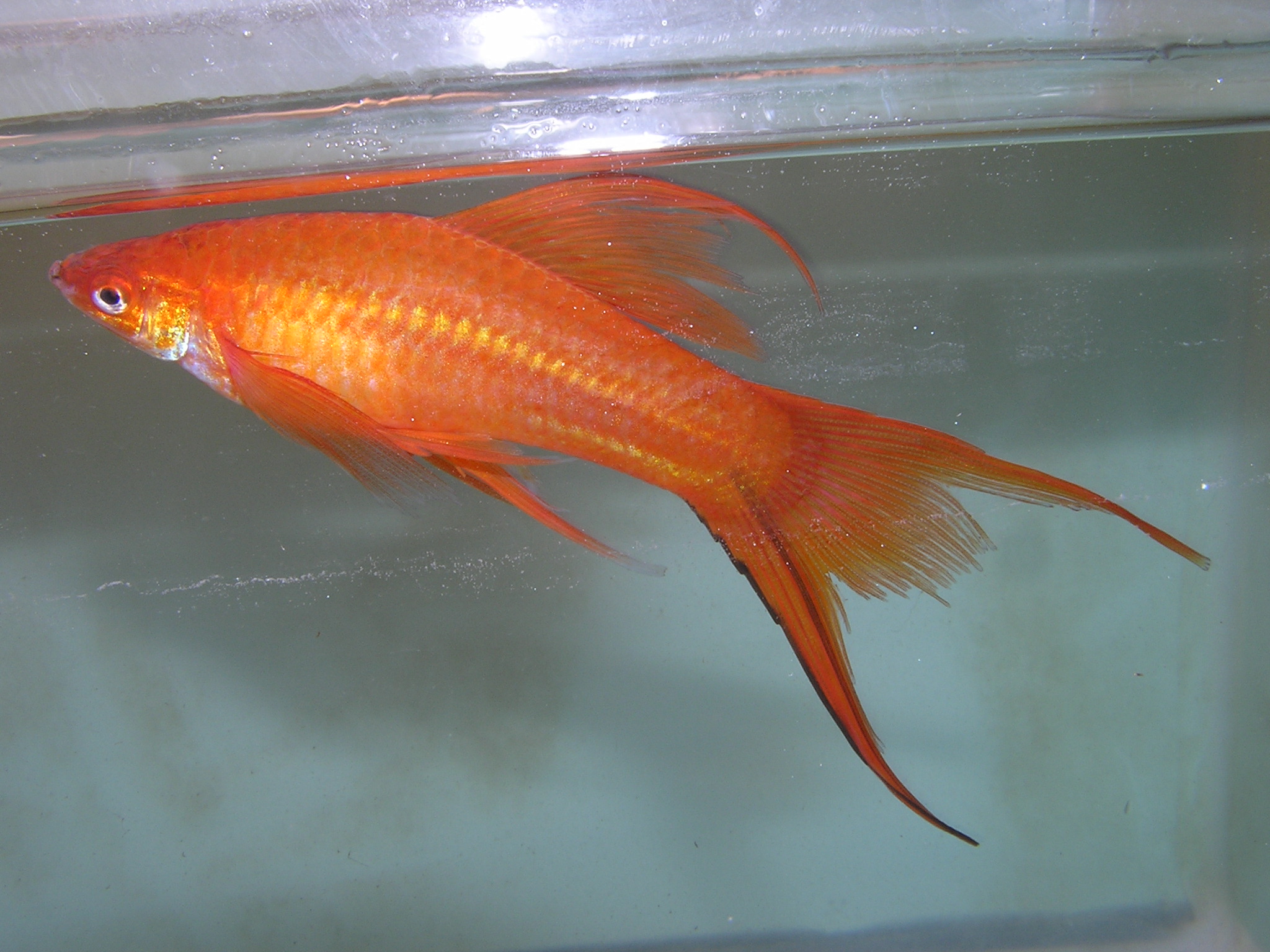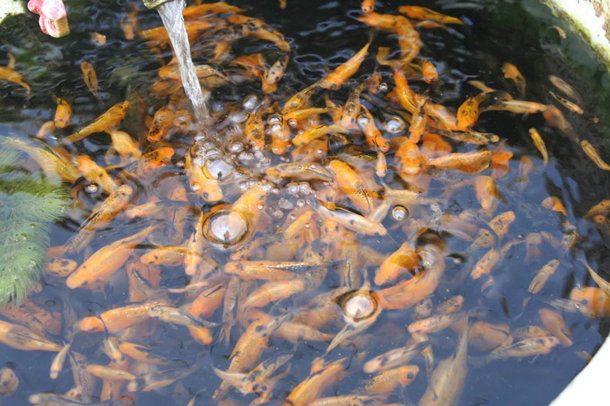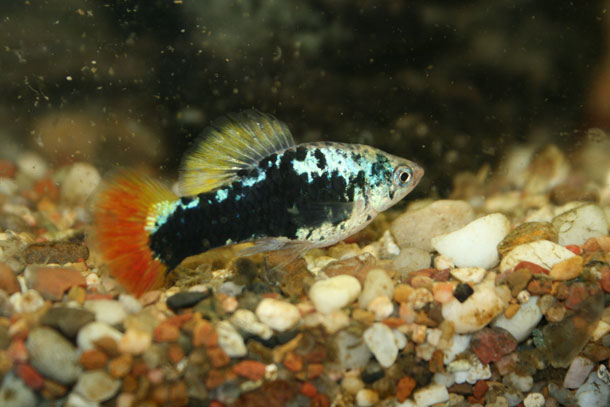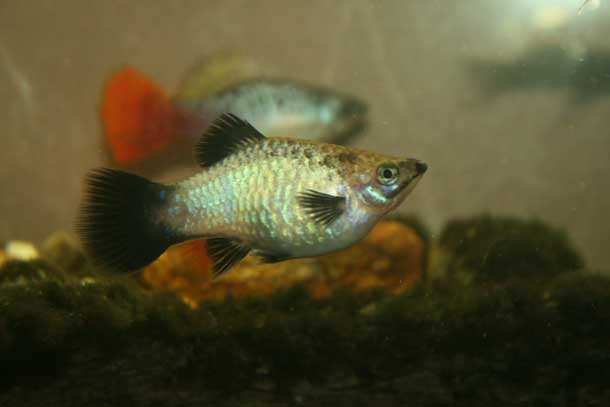I’ll be speaking twice this next week. On Sunday, March 1st I’ll speak at COAST (http://www.coastfishclub.com/ncms/) in Costa Mesa, California at 12:30 pm on fancy livebearers; how we breed and raise them. Then Friday, March 6th, I’ll speak at the San Francisco Aquarium Society ... Read More
breeding
Red Lyretail Swordtail Experiment
One problem with raising lyretail swordtails is that the males are functionally sterile. While they produce viable sperm, they have an elongated gonopodium (a penis-like modified anal fin used to inject sperm into the female), which prevents them from mating. Lyretail in xiphophorines (members of ... Read More
Poecilia mexicana, Campeche
We recently processed our Poecilia mexicana, Campeche. We got this wild molly species in June 2009 from Dr. Ptacek of Clemson University. The "Campeche" notation indicates that Dr. Ptacek collected the fish in Campeche, Mexico. It has proven to be one of our most popular short finned mollies. The ... Read More
Fish Breeding: Trichogaster trichopterus, the Blue Gourami
Below is an article on fish breeding from the August 2013 newsletter. I'm reposting these as blogs so that they are searchable on our website. Fish Breeding: This month I’ll talk about how we breed Blue Gouramis (Trichogaster trichopterus). This fish is the easiest of the anabantids to raise. ... Read More
Poecilia latipinna, Mustang Island
We got this very nice Poecilia latipinna during a recent collecting trip to Mustang Island. I wrote about the trip in a previous blog. Pictured is a young male and a young female. The male will undoubtedly be spectacular when he matures. The other young males collected are just as nice. They are ... Read More
How We Raise Livebearers
This blog results from an email I got from a hobbyist, Christy. She wrote: “Hello, I'm a small hobbyist and I was wondering if you would share your breeding setups for platies and mollies. It sounds like you get a good number of fish from your tanks with the schedule and setup. Best of ... Read More
Flame Variatus
The first photo is of a male Flame Variatus and the second of a female. This is a commercial (domestic) strain of Xiphophorus variatus. Like most commercial xiphophorines (swordtails, platies, and variatus), this fish is likely to be of hybrid origin, although the strain clearly is primarily X. ... Read More
Redtail Blue Tuxedo Variatus
The photo is of a male Redtail Blue Tuxedo Variatus, a commercial (domestic, if you prefer) strain of Xiphophorus variatus. Like most commercial xiphophorines (swordtails, platies, and variatus), this fish is likely to be of hybrid origin, although the strain clearly is primarily X. variatus based ... Read More
Redtail Black Variatus
The photo is of a male Redtail Black Variatus, a commercial (domestic, if you prefer) strain of Xiphophorus variatus. Like most commercial xiphophorines (swordtails, platies, and variatus), this fish is likely to be of hybrid origin, although the strain clearly is primarily X. variatus based on its ... Read More
Blue Opal Wag Maculatus
The photo is of an adult female Blue Opal Wag Maculatus. This is a commercial (domestic) maculatus-type variety that we are developing. First, why do I say maculatus-type? Because, while it has the general shape and fins of Xiphophorus maculatus, it is of hybrid parentage. Since it has a wag ... Read More









